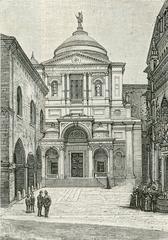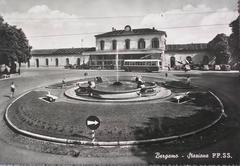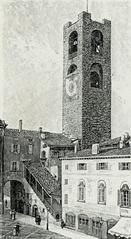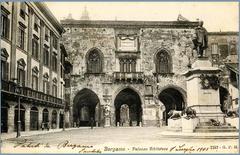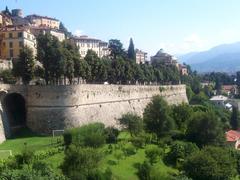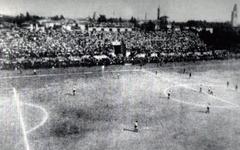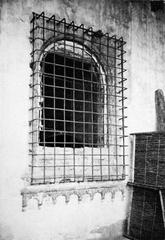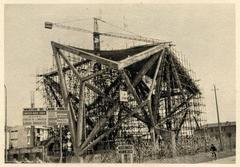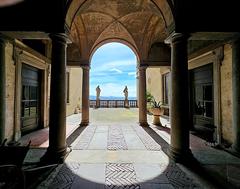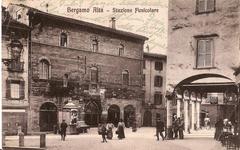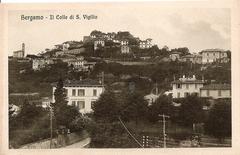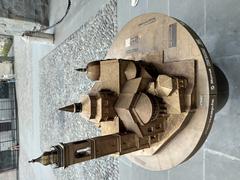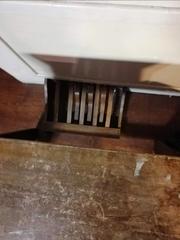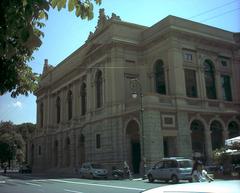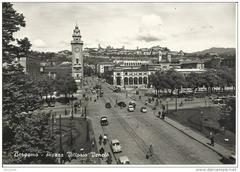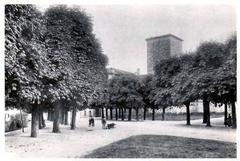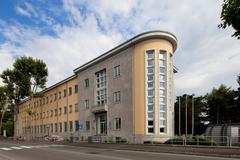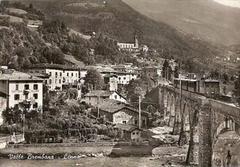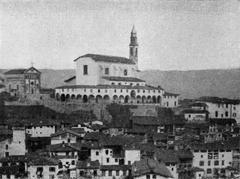Accademia Carrara Visiting Hours, Tickets, and Complete Guide to Bergamo’s Historical Art Gallery (2025)
Date: 14/06/2025
Introduction: Accademia Carrara’s Cultural Significance in Bergamo
Nestled in the heart of Bergamo, Italy, the Accademia Carrara stands as a testament to centuries of artistic heritage and civic philanthropy. Established in 1796 by Count Giacomo Carrara, the institution was envisioned as both an art museum and an academy, nurturing aspiring artists while safeguarding a remarkable private collection. Today, the museum houses over 1,800 paintings, alongside sculptures, drawings, and decorative arts spanning the 14th to the 19th centuries. Masterpieces by Botticelli, Raphael, Titian, Lorenzo Lotto, and Giovanni Battista Moroni highlight the collection, reflecting Bergamo’s vital role in the Italian Renaissance and its connections to the Venetian and Lombard schools (explorebergamo.com; italia.it; lonelyplanet.com).
The museum’s neoclassical building, designed by Simone Elia in 1810, offers an elegant and contemplative setting. Extensive restorations completed in 2015 modernized the facility, adding amenities and enhanced accessibility, including the PwC Gardens—a green oasis next to the gallery (lacarrara.it; bergamobytuktuk.com).
As an active center for art and culture, Accademia Carrara offers dynamic exhibitions, educational programs, and inclusive initiatives. The 2025–2026 “Mondo Carrara” series promises thematic shows on Renaissance art, unique media, and local heritage, affirming the museum’s role as a bridge between tradition and innovation (lacarrara.it; bergamonews.it).
Table of Contents
- Historical Overview
- Visitor Information
- Collection Highlights
- Special Exhibitions and Events (2025–2026)
- Accademia Carrara’s Community Role
- FAQ
- Plan Your Visit & Resources
Historical Overview
Founding and Early Development
Accademia Carrara’s origins are rooted in Count Giacomo Carrara’s vision. Founded in 1796, it was intended as both a public gallery and a school for artists. The museum opened to the public in 1793 and offered drawing and painting courses in the same building, ensuring a deep integration of artistic practice and appreciation (explorebergamo.com; spottinghistory.com).
After Carrara’s death, the institution was managed by a commissary until 1958, when the Comune di Bergamo (City Council) assumed control, transitioning it into a purely public museum (spottinghistory.com).
Architectural Evolution
The museum’s neoclassical building, designed by Simone Elia (a student of Leopoldo Pollack), was completed in 1810 to house both the growing art collection and the academy. Its refined lines and harmonious proportions create an ideal backdrop for the museum’s masterpieces (italia.it). Major restorations from 2008–2015 preserved its historic character while introducing modern amenities and expanding exhibition space (explorebergamo.com).
Growth of the Collection
The collection has grown through acquisitions, bequests, and donations. As of 2006, it included over 1,800 paintings, plus sculptures, prints, medals, bronzes, ceramics, porcelain, and period furniture (spottinghistory.com). The collection is especially strong in Renaissance and Baroque art, featuring works by Pisanello, Botticelli, Bellini, Mantegna, Raphael, Titian, Lotto, Moroni, Guardi, and others (italia.it). Local artists, such as Evaristo Baschenis, are also well-represented (explorebergamo.com).
Educational Mission
Education has always been central. The original academy offered courses for aspiring artists. In 1912, the educational function separated, and the Fine Arts Academy moved to its own premises. Today, it operates as the Accademia di Belle Arti nearby, maintaining close ties to the museum (spottinghistory.com).
Modernization and Recent Developments
The 2015 restoration modernized the museum, improving accessibility and visitor facilities. In 2024, the PwC Gardens opened, offering a tranquil outdoor space and a new bistro (explorebergamo.com). The museum continues to expand its cultural and educational programs, reinforcing its role as Bergamo’s premier art institution.
Visitor Information
Visiting Hours (2025–2026)
- Monday: Closed
- Tuesday to Sunday: 10:00 AM – 6:00 PM (last entry 5:30 PM)
- Special exhibitions and holidays may affect hours; check the official website for updates.
Tickets and Admissions
- Standard Admission: €10–€15 (depending on exhibition)
- Reduced: €5–€7 (EU citizens 18–25, seniors 65+)
- Free Entry: Under 18, Bergamo residents, select days
- Group Discounts: Available on request
Advance booking via the official website is strongly recommended, especially for special exhibitions.
Accessibility
The museum is fully accessible, with elevators, ramps, and services for visitors with disabilities. Initiatives like “Valori Tattili” provide tactile experiences for visually impaired guests (lacarrara.it).
Getting There
- Address: Piazza Giacomo Carrara, 82, 24129 Bergamo BG, Italy
- By Foot: Easily accessible from both Città Alta and Città Bassa
- By Bus: Lines 1, 3, 8 stop nearby
- By Car: Public parking garages and limited street parking available
Nearby Attractions
- Città Alta (Upper Town): Medieval walled city with Piazza Vecchia
- Basilica di Santa Maria Maggiore and Colleoni Chapel
- GAMEC: Modern and Contemporary Art Gallery directly opposite (spottinghistory.com)
Collection Highlights
The Accademia Carrara’s collection offers a sweeping panorama of Italian art:
- Renaissance Masters: Botticelli’s The Story of Virginia, Bellini’s Madonna and Child, Mantegna’s Madonna and Child, and Raphael’s San Sebastiano (Lonely Planet).
- Venetian and Lombard Schools: Works by Titian, Lotto (Portrait of Lucina Brembati), Moroni (The Tailor), Veronese, Guardi, and Canaletto.
- Baroque and Rococo: Tiepolo’s Sacrifice of Isaac, Fra Galgario’s portraits.
- 19th-Century: Francesco Hayez’s Portrait of Alessandro Manzoni.
- Notable Donations: Federico Zeri’s bequest of sculptures; over 98% of the collection is from private patrons (italia.it; wannenesgroup.com).
Special Exhibitions and Events (2025–2026)
The museum’s “Mondo Carrara” program features:
- Dentro Lorenzo Lotto (April 2025 onwards): See the San Bernardino Altarpiece up close, with contemporary photographic interpretations (lacarrara.it).
- Tarocchi: The Origins, the Cards, and Their Fortune (2025): Explore historic tarot decks, including the Colleoni Tarot (lacarrara.it).
- Arte e Natura (2025–2026): Renaissance and Baroque works on stone.
- Giacomo Carrara: Connoisseur, Collector, Patron (Autumn 2026–Spring 2027): Focus on the museum’s founder (finestresullarte.info).
- Additional projects: Il Sedicente Moradi, Napoli in Bergamo, Hiroshi Sugimoto: Opera House, and more.
For details and booking, visit the official exhibitions page.
Accademia Carrara’s Community Role
Cultural and Educational Impact
From its inception, Accademia Carrara has been a hub for artistic education, offering workshops, tours, and inclusive programs for all ages and abilities (visitbergamo.net).
Accessibility and Social Inclusion
The museum pioneers accessibility, with tactile experiences for visually impaired visitors and initiatives using art as therapy (lacarrara.it; bergamonews.it).
Economic and Tourism Impact
Accademia Carrara significantly contributes to Bergamo’s tourism, supporting local businesses and attracting visitors globally (in-lombardia.it; bergamobytuktuk.com).
Partnerships and Sustainability
Strong collaborations with local, national, and international partners foster research and cultural exchange, while ongoing restoration projects and the new PwC Gardens reflect a commitment to sustainability and community wellbeing (wannenesgroup.com).
FAQ
Q: What are the visiting hours?
A: Tuesday–Sunday, 10:00 AM–6:00 PM. Closed Mondays.
Q: How much do tickets cost?
A: Standard €10–€15; discounts for students, seniors, under 18s, and Bergamo residents.
Q: Is the museum accessible?
A: Yes, with lifts, ramps, and specialized services.
Q: Are guided tours available?
A: Yes, book via the official website.
Q: Can I take photos?
A: Photography (without flash/tripod) is allowed in most areas.
Q: What other attractions are nearby?
A: Città Alta, Basilica di Santa Maria Maggiore, Colleoni Chapel, and the GAMEC modern art gallery.
Plan Your Visit & Resources
- Accademia Carrara Official Website
- Current Exhibitions and Events
- Visit Bergamo
- Guide to Bergamo Historical Sites
- Top Art Exhibitions in Bergamo
Visitor Tips:
- Book tickets in advance, especially for special exhibitions.
- Use digital resources and the Audiala app for audio guides and updates.
- Combine your visit with a walk through the PwC Gardens or a tour of Bergamo’s Città Alta.
Visual Highlights



Summary
Accademia Carrara is a cornerstone of art, culture, and community in Bergamo. Its world-class collection, outstanding visitor services, and dynamic programming make it a must-visit destination for art lovers and travelers alike. Whether you’re exploring masterpieces of the Renaissance or enjoying the tranquil PwC Gardens, the museum offers a holistic cultural experience at the heart of Bergamo.
References
- This guide draws on official and authoritative sources, including:
For the most up-to-date information, always consult the official Accademia Carrara website.
